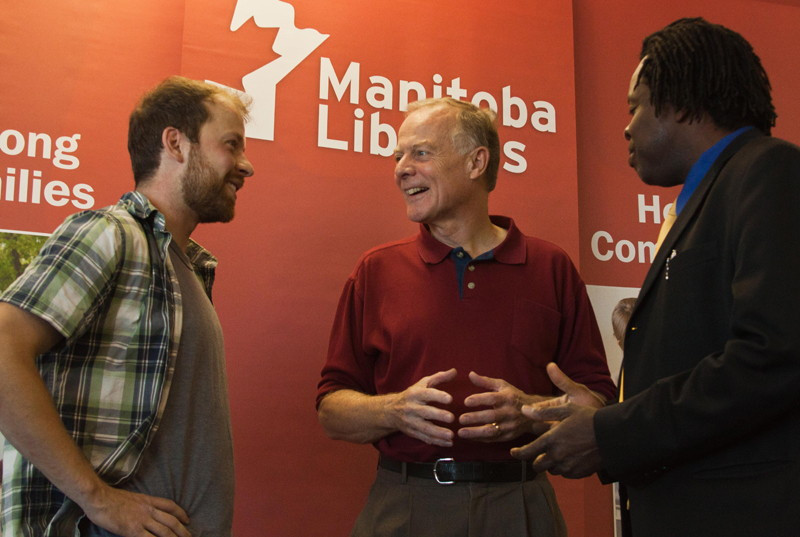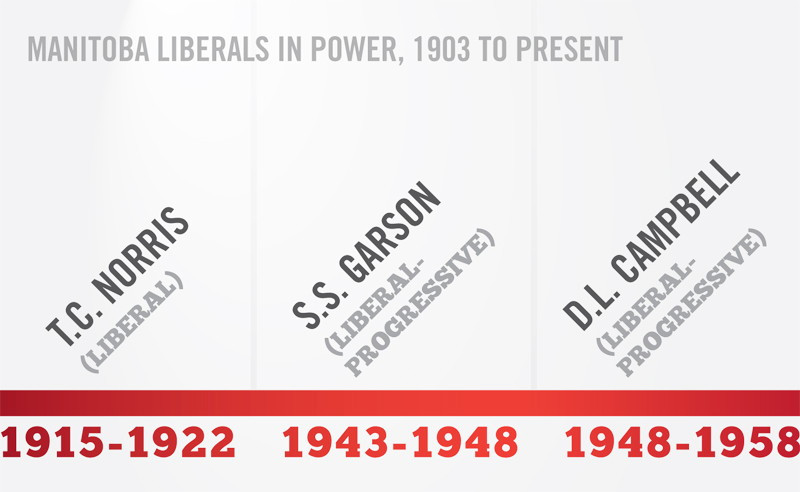The rise and fall of the Liberal party
The Liberal party hasn’t seen much success in Manitoba since their momentary resurgence of popularity in 1988.
Now, there is a chance the Liberals will come out of this election without a seat in office.
Historically, the Liberals have been a significant party in Manitoba. According to Politics in Manitoba by University of Winnipeg politics professor Christopher Adams, throughout the first few decades of the 20th century, the Liberals garnered strong support, holding at least 30 per cent of the popular vote throughout the 1930s and 1940s.
However, support for the Liberals hit a swift decline in the 1960s, and they have been on shaky ground ever since.
Currently, the only Liberal MLA to hold a seat in Winnipeg is party leader Jon Gerrard in River Heights. Some suggest there is a possibility Gerrard might lose this seat to PC candidate Marty Morantz in the October election.
Barry Raeside, a resident of River Heights, has supported Gerrard for the past few elections. However, this year, he has chosen to support Morantz.
“It’s time for a change,” said Raeside.
Raeside says that provincially, the Liberals are no longer a relevant party, having lost too much of its electoral support over the years.
In an interview, Adams said there’s a chance the Liberals will come out of this election without a single seat.
“Gerrard ... is in for a very tough fight,” said Adams. “We might see the Liberal party wiped out in this election.”
Gerrard says the Liberals’ decline does not spell the end of their party power.
“Parties go up and down over the years. There were many years where the Conservatives were in decline as well, from 1915 to the late 1950s,” he said. “We’re bringing the Liberal party back and it’s going to be a powerful force again.”
Fort Rouge candidate Paul Hesse is optimistic this election will see more provincial support for the Liberals.
He says this is partially due to a new, younger generation of Liberal candidates who are open to and aware of the issues affecting Winnipeggers.
Hesse says the Liberals have been in a decline because they were originally a rural party.
“Back in the ‘30s it was a very different Liberal party. Liberals were very strong with farmers and for farmers. They were a little slow to become an urban party,” said Hesse.
Hesse is confident the Liberals have taken urban issues to heart, and will once again become a powerful party.
In what looks to be a close election, Hesse believes the Liberals will have the deciding vote in legislature. He says people will soon tire of the NDP members, and when that happens, the Liberals will rise.
“ We might see the Liberal party wiped out in this election.
Christopher Adams, author, Politics in Manitoba
The last big Liberal resurgence happened in 1988, when Sharon Carstairs led the Liberals to official opposition status, according to Adams’ book.
The popular vote for the Liberals soared from 14 per cent in 1986 to 35 per cent in 1988, with Liberal candidates winning 19 seats in Winnipeg and one rural seat.
In his book, Adams states the Liberals’ sudden success was due in part to the NDP party exhausting much of their resources in dealing with a variety of internal political issues. This allowed Carstairs to eat into the NDP support base.
Adams says it is unlikely the Liberals will be able to use a similar strategy this election.
Gerrard wouldn’t say whether one of their goals is to grab support from under the NDP.
“There are certainly areas in Winnipeg where the NDP really haven’t done the job that needs to be done,” said Gerrard.
As the Oct. 4 election date approaches, several factors have hobbled the Liberals, Adams said.
One of those factors is the loss of Kevin Lamoureux, whose departure for federal politics left Gerrard as the only incumbent member of the Liberal party running in this election.
Adams says another reason for the Liberals’ low election rates is their popularity with younger generations.
“Younger adults have a much lower turnout rate when it comes to voting,” said Adams.
Gerrard says young people are attracted to the Liberal party’s balance and vision.
This election, the party has made use of several social media outlets, including Twitter, Facebook and a daily blog, in the hopes of reaching out to more young people.
Published in Volume 66, Number 5 of The Uniter (September 29, 2011)








